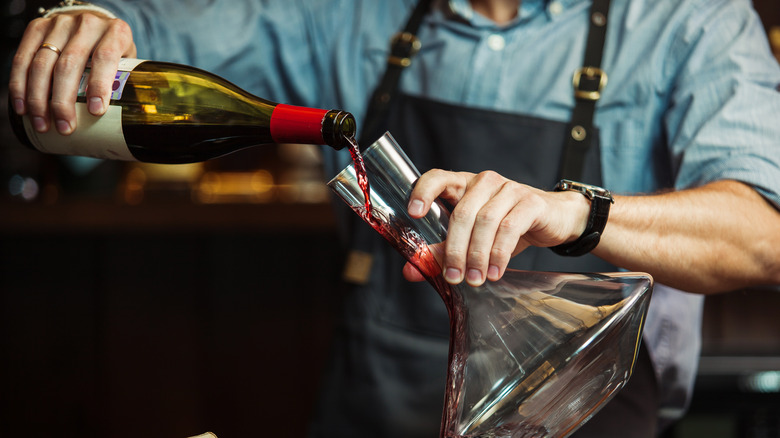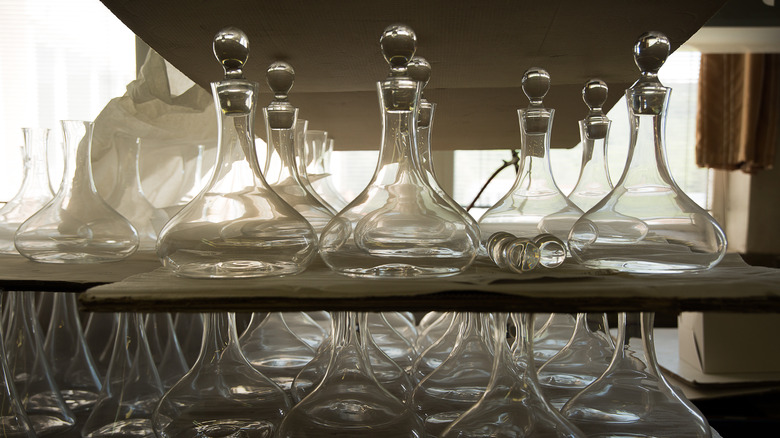Carafe Vs. Decanter: What's The Difference?
When you're preparing to entertain guests, the right table setting can turn an average get-together into a memorable affair. Adding elegant glass carafes can add a stylish, sophisticated flair to even the simplest of tablescapes. At some restaurants, wine is poured from carafes as a graceful touch, however, this technique can also help servers measure and control the pour, explains Wine Ware.
Carafes are typically made from crystal or glass, but they can also be found in plastic and metal designs. Carafes do not have lids or tops, allowing drinks to be served quickly and easily, notes Delighted Cooking. Without a handle, the smooth container is designed to hold room-temperature or chilled beverages, such as ice tea, water, lemonade, fresh juice, and of course, wine. Beyond looking nice, do carafes serve any real purpose? In addition, these elegant vessels look very similar to decanters, so are there any differences between the two?
One for water, one for wine
While carafes are meant for any beverage that isn't hot, decanters are made exclusively for wines that are likely to contain sediments or small pieces of cork, states Advanced Mixology. Decanting, according to Wine Spectator, is the process of separating gritty sediment commonly found in vintage reds while aerating wines and allowing them to reach full aromatic potential. Wine sediment isn't harmful, but it can be bitter to taste, and using a decanter can help serve wine with ease. Manufacturers like Riedel have even created unique designs that give at-home hosts the opportunity to bring unexpected visual elements into their gatherings.
While both decanters and carafes have broad bottoms and tapered necks, the base on a decanter is usually wider compared to carafes (via Delighted Cooking). Wine decanters can also come with stoppers, so if you can't finish the wine in one sitting, Advanced Mixology recommends using the top to preserve the leftover contents.

